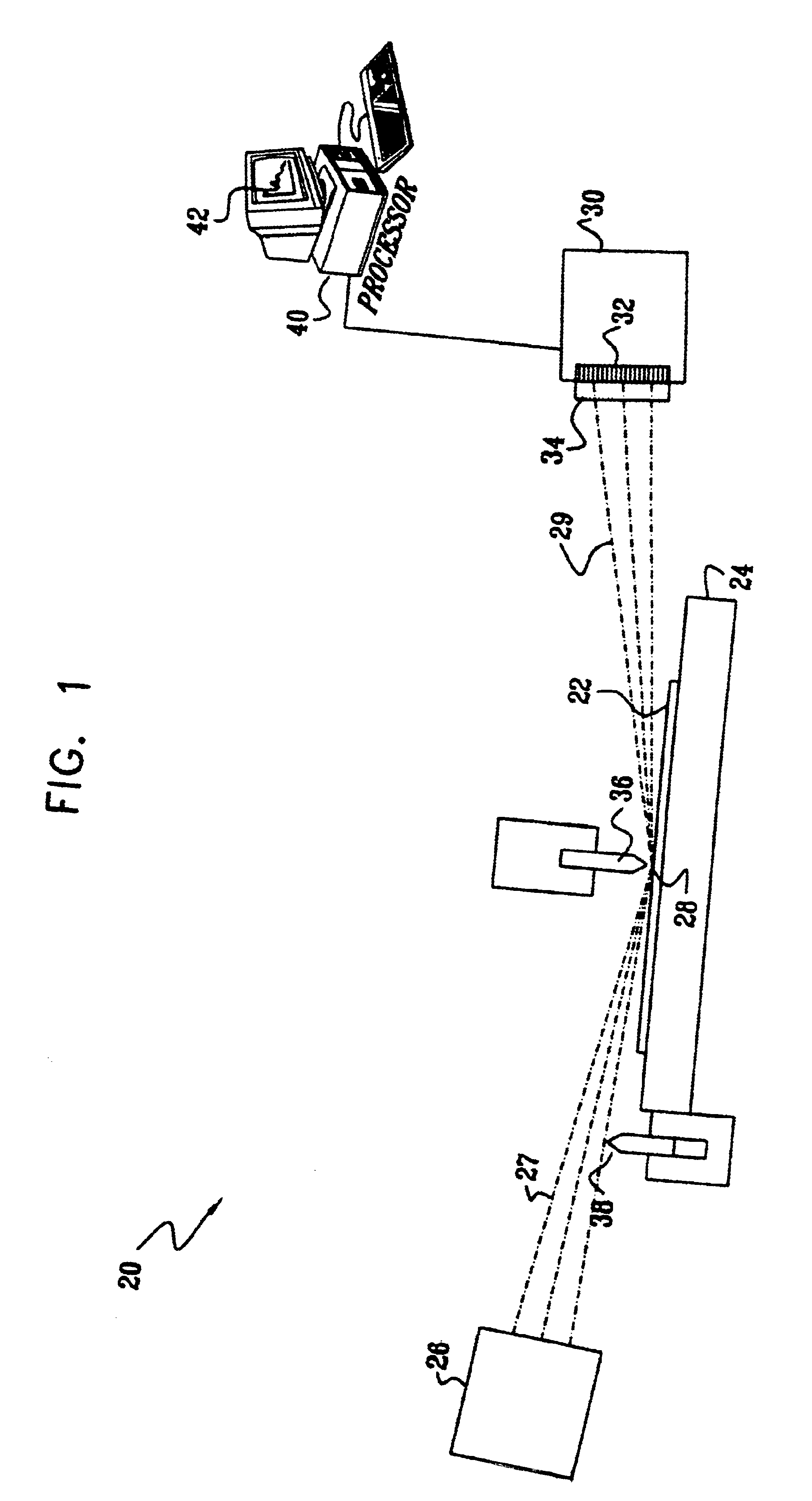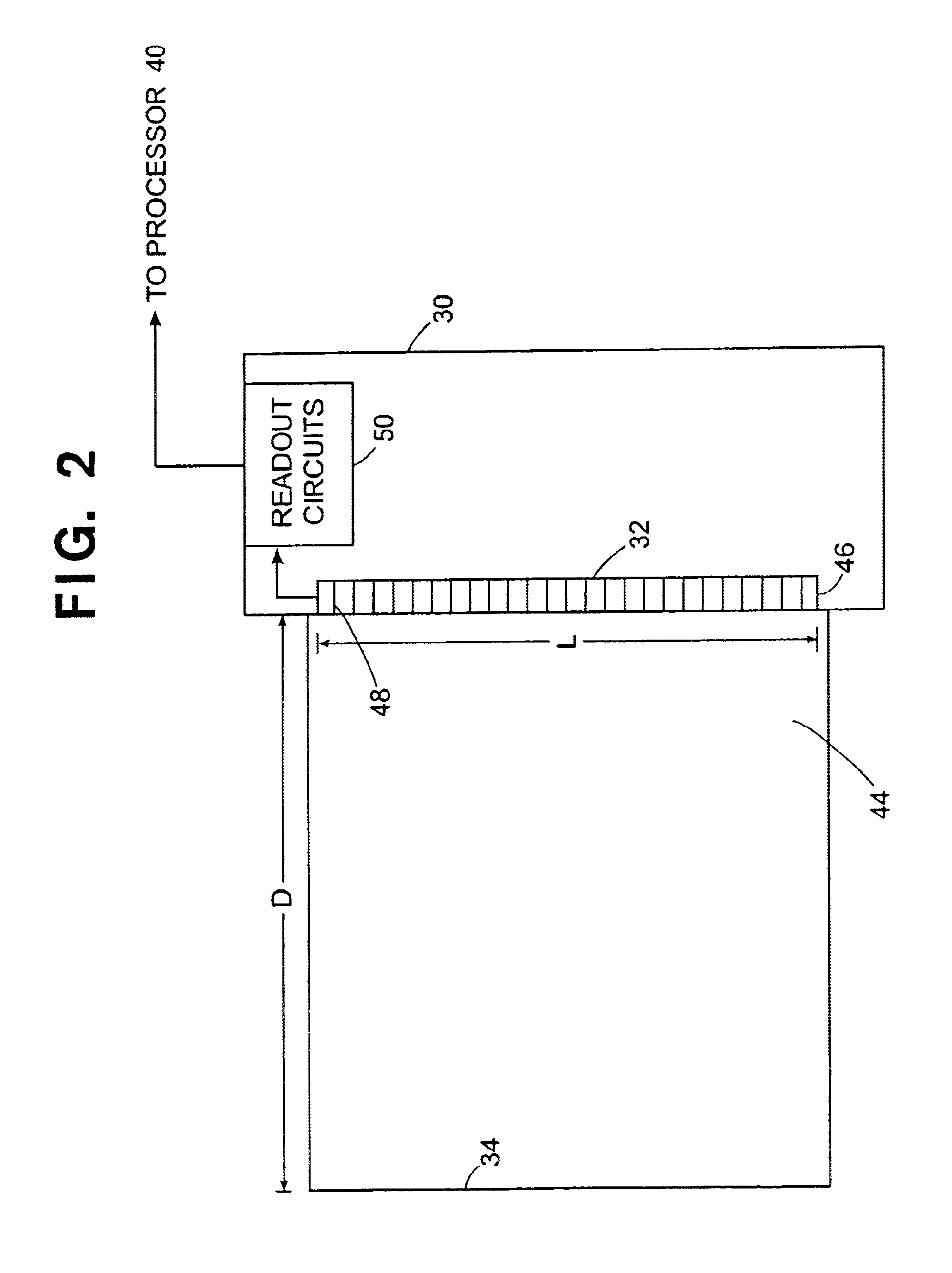XRR detector readout processing
a detector and readout technology, applied in the field of analytical instruments, can solve the problems of inability to resolve the energy or number of incident x-ray photons, the detection of the inability to generally detect high-order fringes at higher incidence angles. achieve the effect of accurate determination of these properties, enhanced spatial resolution, and high dynamic rang
- Summary
- Abstract
- Description
- Claims
- Application Information
AI Technical Summary
Benefits of technology
Problems solved by technology
Method used
Image
Examples
Embodiment Construction
[0071]FIG. 1 is a schematic illustration of a system 20 for X-ray reflectometry of a sample 22, in accordance with a preferred embodiment of the present invention. The sample is preferably mounted on a motion stage 24, allowing accurate adjustment of its position and orientation. An X-ray source 26, typically an X-ray tube with suitable monochromatizing optics (not shown), irradiates a small area 28 on sample 22. A preferred X-ray tube for this purpose is the XTF5011 tube, produced by Oxford Instruments of Scotts Valley, Calif. A number of different optical configurations that may be used in source 26 are described in U.S. patent application Ser. No. 09 / 408,894, which is assigned to the assignee of the present patent application and is incorporated herein by reference. The optics preferably comprise a curved crystal monochromator, such as the Doubly-Bent Focusing Crystal Optic, produced by XOS Inc., of Albany, N.Y. Other suitable optics are described in patent application Ser. No. 0...
PUM
| Property | Measurement | Unit |
|---|---|---|
| diameter | aaaaa | aaaaa |
| energy | aaaaa | aaaaa |
| reflection angles | aaaaa | aaaaa |
Abstract
Description
Claims
Application Information
 Login to View More
Login to View More - R&D
- Intellectual Property
- Life Sciences
- Materials
- Tech Scout
- Unparalleled Data Quality
- Higher Quality Content
- 60% Fewer Hallucinations
Browse by: Latest US Patents, China's latest patents, Technical Efficacy Thesaurus, Application Domain, Technology Topic, Popular Technical Reports.
© 2025 PatSnap. All rights reserved.Legal|Privacy policy|Modern Slavery Act Transparency Statement|Sitemap|About US| Contact US: help@patsnap.com



